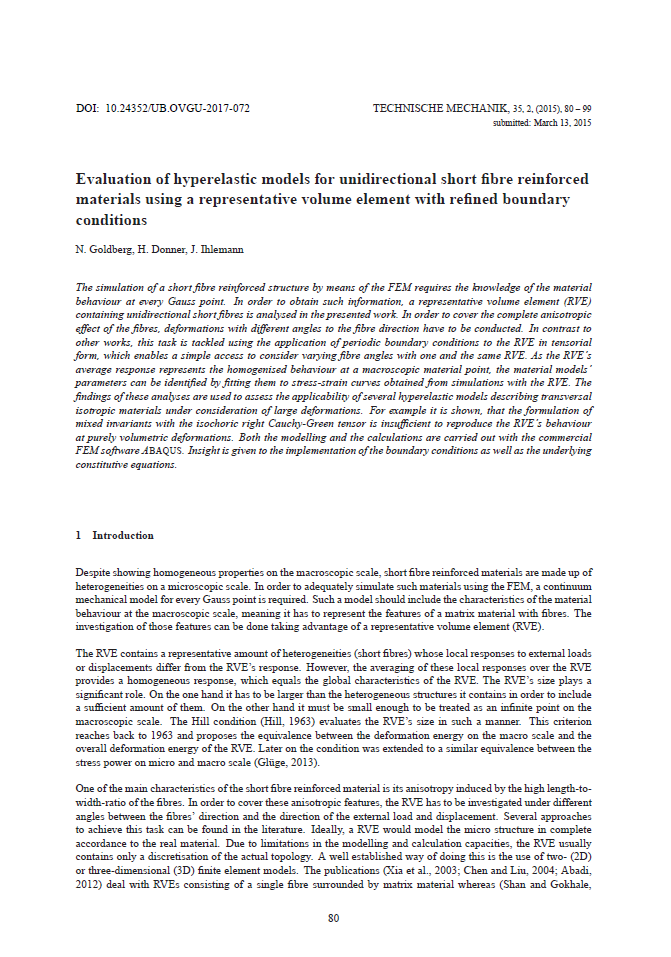Evaluation of hyperelastic models for unidirectional short fibre reinforced materials using a representative volume element with refined boundary conditions
DOI:
https://doi.org/10.24352/UB.OVGU-2017-072Abstract
The simulation of a short fibre reinforced structure by means of the FEM requires the knowledge of the material behaviour at every Gauss point. In order to obtain such information, a representative volume element (RVE) containing unidirectional short fibres is analysed in the presented work. In order to cover the complete anisotropic effect of the fibres, deformations with different angles to the fibre direction have to be conducted. In contrast to other works, this task is tackled using the application of periodic boundary conditions to the RVE in tensorial form, which enables a simple access to consider varying fibre angles with one and the same RVE. As the RVE’s average response represents the homogenised behaviour at a macroscopic material point, the material models’ parameters can be identified by fitting them to stress-strain curves obtained from simulations with the RVE. The findings of these analyses are used to assess the applicability of several hyperelastic models describing transversal isotropic materials under consideration of large deformations. For example it is shown, that the formulation of mixed invariants with the isochoric right Cauchy-Green tensor is insufficient to reproduce the RVE’s behaviour at purely volumetric deformations. Both the modelling and the calculations are carried out with the commercial FEMsoftware ABAQUS. Insight is given to the implementation of the boundary conditions as well as the underlying constitutive equations.





